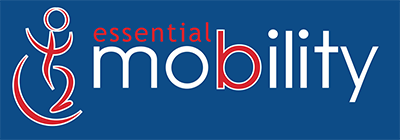It is not just the elderly who have trouble standing from sitting – there are several conditions which affect movement and mobility that make it difficult to stand. The best advice is not to give up when faced with these troubles or assume difficulty is impossible. Good exercise, changes in routine and the right aids can improve things for you tenfold.
Common Causes
Why this blog post will not help you diagnose what is causing your difficulty in standing up, we will outline common causes. If you do have ongoing problems, you should consult your doctor or GP.
One of the most common causes is simply a result of getting older and no underlying medical condition. Joints get worn down over the years, back problems arise, and mobility becomes harder. Other causes can be due to injury or weight gain.
Arthritis, with common types such as osteoarthritis and rheumatoid arthritis, is associated with pain, swelling and stiffness in joints, which will lead to difficulty standing.
Parkinson’s disease is a serious condition that affects mobility. The degeneration of brain tissues leads to tremors, muscle stiffness and slow movement. Other medical conditions include multiple sclerosis which affects the brain and nerves resulting in problems with balance, movement and sensation.
Myositis is inflammation of the muscles, common types being dermatomyositis and polymyositis which can cause painful or aching muscles, weak muscles, tripping or falling and tiredness.
Effects from heart conditions or strokes can also impact mobility, especially a person’s ability to get up from a chair. Also, medicines and treatments like chemotherapy can leave patients exhausted.
Exercises to Improve Strength
No matter how out of shape you are, implementing a regular exercise routine can improve mobility and fitness, even in a small way like helping you stand from a sitting position. Simple exercises can be done when sitting, such as working calf muscles by moving your ankles up and down, lifting your legs as if walking, straightening your legs by raising a foot off the floor one at a time. Doing these movements repeatedly for a set amount of time will get easier.
You should also strengthen arm muscles that will help lever you out of chairs or push and pull you from sitting positions. Using your arms more reduces the strain on knees and thighs. Invest in small arm weights to use when sitting or standing.
Good balance is another thing to help to move from sitting to standing. Pilates or yoga are great activities to try that can improve your balance, along with exercises that strengthen core muscles. Most importantly, you should take your time with exercises and don’t overdo it.
Mobility Aids
Sometimes, no amount of exercise is going to prevent a need for additional assistance, and for many, mobility aids are needed. Rise and recline chairs are appealing, as they will move, at the push of a button, to your preferred position. Some models also have leg adjustments, so you can be sure you have the best comfort when sitting too.
Walkers are great aids to use that you can use to push yourself off your chair, and their stability of four legs provides extra balance and stability when you move.
When it comes to all-terrain mobility scooters, there are those which have movable seats that can be utilised to make getting on and off the mobility scooter much easier.
Get in touch with us today to find out about the mobility aids we have available.





